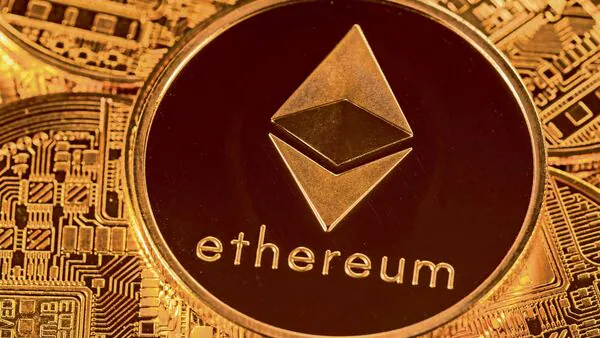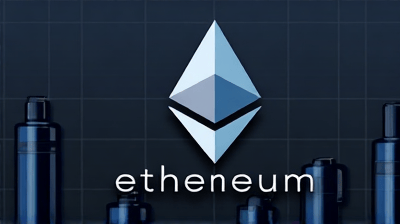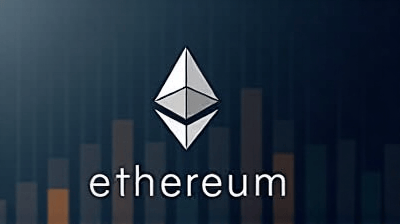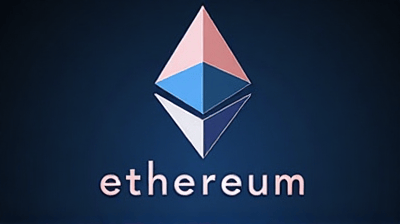
Ethereum, the second-largest cryptocurrency by market capitalization, continues to evolve as a leading blockchain platform, powering decentralized finance (DeFi), non-fungible tokens (NFTs), and smart contracts. In 2025, with Ethereum’s market cap around 500 billion dollars and ETH trading between 3500 and 4500 dollars, the network is preparing for its next major upgrade, “Pectra,” expected to roll out in mid-2025. As of May 21, 2025, 03:21 PM HKT, this upgrade promises to enhance scalability, security, and developer experience, potentially impacting ETH’s price, adoption, and investor opportunities.
Ethereum’s Evolution and the Pectra Upgrade
Ethereum has undergone transformative upgrades since its 2015 launch, most notably the 2022 transition to proof-of-stake (PoS) via “The Merge,” which reduced energy consumption by 99.95 percent. Subsequent upgrades, like Dencun in 2024, improved scalability through data sharding and lower transaction costs for layer-2 solutions. The Pectra upgrade, combining the Prague (execution layer) and Electra (consensus layer) hard forks, is the next step in Ethereum’s roadmap, focusing on technical enhancements and user accessibility.
Announced by Ethereum developers in late 2024, Pectra aims to:
Introduce Ethereum Improvement Proposals (EIPs) like EIP-7251 for increased validator flexibility.
Enhance smart contract functionality with EIP-7702 for better account abstraction.
Optimize staking and network efficiency.
Prepare for future scalability upgrades like full sharding.
Social media discussions on X reflect excitement among Ethereum enthusiasts, with posts praising Pectra’s potential to boost DeFi and NFT adoption, though some users express concerns about delays or complexity. Below, we analyze the key components of Pectra, their impact on Ethereum’s ecosystem, and what investors need to know.
Key Features of the Pectra Upgrade

The Pectra upgrade includes several EIPs that address technical and user-facing improvements, each with implications for Ethereum’s value proposition and investor sentiment.
1. EIP-7251: Increased Maximum Effective Balance for Validators
EIP-7251 allows validators to stake more than the current 32 ETH cap, potentially up to 2048 ETH, without requiring multiple validator nodes. This reduces operational complexity for large stakers, like institutions, and optimizes network efficiency by consolidating validator slots.
Impact: Institutional staking could increase, boosting ETH demand as more tokens are locked. In 2025, with 30 million ETH (25 percent of supply) already staked, this could tighten circulating supply, supporting price growth.
2. EIP-7702: Account Abstraction
EIP-7702, proposed by Vitalik Buterin, enhances account abstraction, allowing wallets to function as smart contracts. This enables features like gasless transactions, multi-signature approvals, and customizable security, improving user experience.
Impact: Simplified wallet interactions could drive retail adoption, especially for DeFi and NFTs. In 2025, user-friendly wallets may attract new investors, increasing transaction volume and ETH’s utility.
3. EIP-7594: PeerDAS (Data Availability Sampling)
PeerDAS is a step toward full sharding, enabling light clients to verify data availability without downloading entire blocks. This improves scalability for layer-2 solutions like Arbitrum and Optimism, reducing costs.
Impact: Lower layer-2 fees (already down 50 percent post-Dencun) enhance Ethereum’s competitiveness against rivals like Solana, potentially increasing DeFi’s total value locked (TVL), currently 150 billion dollars.
4. Verkle Trees Preparation
Pectra lays groundwork for Verkle trees, a data structure to reduce node storage requirements, paving the way for stateless clients. This enhances decentralization and scalability.
Impact: Improved network efficiency could attract developers, reinforcing Ethereum’s dominance in smart contract platforms.
5. Staking and Security Enhancements
Pectra includes upgrades to prevent validator slashing (penalties for misbehavior) and improve consensus mechanisms, strengthening network security.
Impact: Enhanced reliability boosts investor confidence, particularly for institutional players wary of technical risks.
Implications for Investors
The Pectra upgrade could significantly influence Ethereum’s price, adoption, and market position. Below are the key implications for investors in 2025.
1. Price Potential
Historically, Ethereum upgrades drive price rallies due to increased adoption and speculation. The Merge in 2022 saw ETH rise 30 percent in the months prior, and Dencun boosted ETH 20 percent in early 2024. In 2025, Pectra’s focus on staking and scalability could push ETH toward 5000 to 6000 dollars, especially if institutional demand grows.
Bull Case: Increased staking and DeFi adoption reduce circulating supply, driving a 30 to 50 percent rally post-upgrade.
Bear Case: Delays or market-wide downturns (e.g., a 2025 recession) could limit gains to 10 percent or trigger short-term dips.
X posts predict ETH hitting 6000 dollars by Q4 2025, citing Pectra and regulatory clarity, though some warn of volatility.
2. DeFi and NFT Growth
Pectra’s scalability and user experience improvements could accelerate DeFi and NFT adoption. In 2025, DeFi’s TVL is projected to reach 200 billion dollars, with Ethereum hosting 60 percent. Lower layer-2 fees and account abstraction may attract new users, increasing ETH demand for gas fees and smart contracts.
Opportunity: Investors could see indirect benefits from ETH’s role in DeFi protocols like Uniswap or NFT marketplaces like OpenSea.
3. Competitive Positioning
Ethereum faces competition from faster blockchains like Solana (65000 transactions per second vs. Ethereum’s 30). Pectra’s scalability enhancements, combined with layer-2 solutions, narrow this gap, reinforcing Ethereum’s market leadership.
Opportunity: Ethereum’s entrenched developer community and Pectra’s upgrades make ETH a safer long-term bet than newer rivals.
4. Institutional Adoption
Pectra’s staking flexibility and security enhancements appeal to institutions. In 2025, firms like BlackRock and Fidelity expand Ethereum exposure via ETFs, with 5 billion dollars in inflows year-to-date. Increased validator participation could lock up more ETH, supporting prices.
Opportunity: Institutional backing reduces volatility, making ETH attractive for conservative investors.
5. Regulatory Considerations
The EU’s MiCA regulation and potential U.S. crypto laws in 2025 provide clarity, boosting Ethereum’s legitimacy. However, stricter DeFi or staking rules could raise compliance costs.
Risk: Regulatory uncertainty, noted in X posts, could delay adoption or pressure prices.
Risks to Consider

While Pectra offers opportunities, investors should be aware of risks:
Upgrade Delays: Past Ethereum upgrades faced delays, potentially dampening sentiment. Pectra’s mid-2025 target is ambitious, per developer discussions.
Market Volatility: A 2025 recession or Bitcoin dominance could overshadow ETH gains.
Technical Risks: Bugs or failed upgrades, though rare, could disrupt the network.
Competition: Solana and Binance Smart Chain continue to challenge Ethereum’s DeFi dominance.
Strategies for Investors in 2025
To capitalize on Pectra and Ethereum’s growth, consider these strategies tailored to the 2025 market.
1. Buy and Hold ETH
Purchase ETH before the Pectra upgrade to benefit from potential price appreciation. In 2025, use exchanges like Coinbase or Kraken for secure purchases.
Action: Allocate 10 to 20 percent of a crypto portfolio to ETH (e.g., 10000 dollars in a 50000-dollar portfolio). Hold for 12+ months for long-term capital gains tax benefits.
2. Stake ETH for Passive Income
Stake ETH on platforms like Lido or Rocket Pool to earn 3 to 5 percent annual yields. Pectra’s validator flexibility may increase staking rewards.
Action: Stake 10 ETH (40000 dollars) on Lido for 1600 dollars in annual income, but research slashing risks.
3. Invest in Ethereum-Based Projects
Diversify into DeFi tokens (e.g., UNI, AAVE) or layer-2 solutions (e.g., ARB, OP) that benefit from Pectra’s scalability. In 2025, these projects could outperform ETH if DeFi grows.
Action: Allocate 20 percent of a crypto portfolio to Uniswap (UNI) and Arbitrum (ARB) via a wallet like MetaMask.
4. Use Dollar-Cost Averaging (DCA)
Mitigate volatility by investing a fixed amount regularly. In 2025, with ETH fluctuating 10 to 15 percent monthly, DCA smooths purchase prices.
Action: Invest 500 dollars monthly in ETH via Coinbase’s recurring buy feature.
5. Monitor Regulatory and Upgrade Progress
Stay updated on Pectra’s development via Ethereum’s blog or X hashtags like #PectraUpgrade. Regulatory news, especially U.S. crypto laws, could impact ETH’s price.
Action: Follow @ethereum and @VitalikButerin on X for real-time updates.
6. Secure Your Assets
Use hardware wallets like Ledger or Trezor to store ETH and tokens, as cyberattacks rise in 2025. Enable two-factor authentication on exchanges.
Action: Transfer 5000 dollars in ETH to a Ledger wallet for long-term security.
Case Study: Investing in Ethereum in 2025

Consider Sarah, a 40-year-old investor with 30000 dollars to allocate to crypto. She builds a diversified Ethereum-focused portfolio: 15000 dollars in ETH, 10000 dollars in staking via Rocket Pool, and 5000 dollars in UNI (Uniswap). Sarah uses DCA, investing 1000 dollars monthly in ETH, and monitors Pectra updates on X.
By late 2025, Pectra’s rollout boosts ETH to 5500 dollars, a 25 percent gain. Sarah’s ETH holdings grow to 18750 dollars, staking yields 500 dollars, and UNI rises 20 percent to 6000 dollars. Her portfolio totals 25250 dollars, a 21 percent return, outperforming Bitcoin’s 15 percent gain. Sarah’s proactive strategy and secure storage ensure steady returns despite market volatility.
Conclusion
Ethereum’s Pectra upgrade in 2025 is a pivotal moment, enhancing scalability, staking, and user experience while reinforcing its dominance in DeFi and NFTs. For investors, Pectra offers opportunities through price appreciation, staking income, and exposure to Ethereum-based projects. However, risks like upgrade delays, competition, and regulatory uncertainty require careful navigation. By buying and holding ETH, staking, diversifying, and using DCA, investors can capitalize on Ethereum’s growth in a dynamic crypto market. As Ethereum evolves, staying informed and strategic will help you maximize returns in 2025 and beyond.







